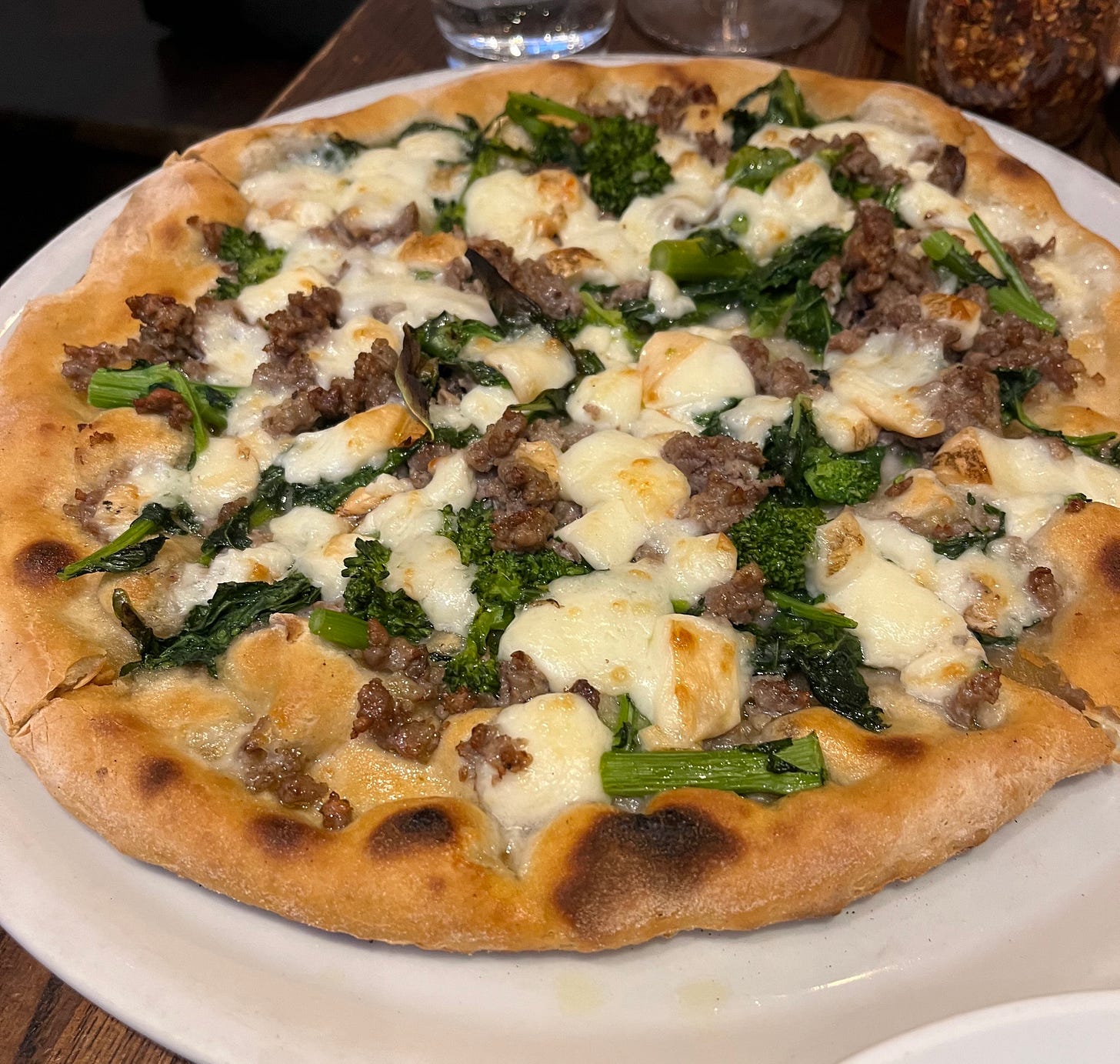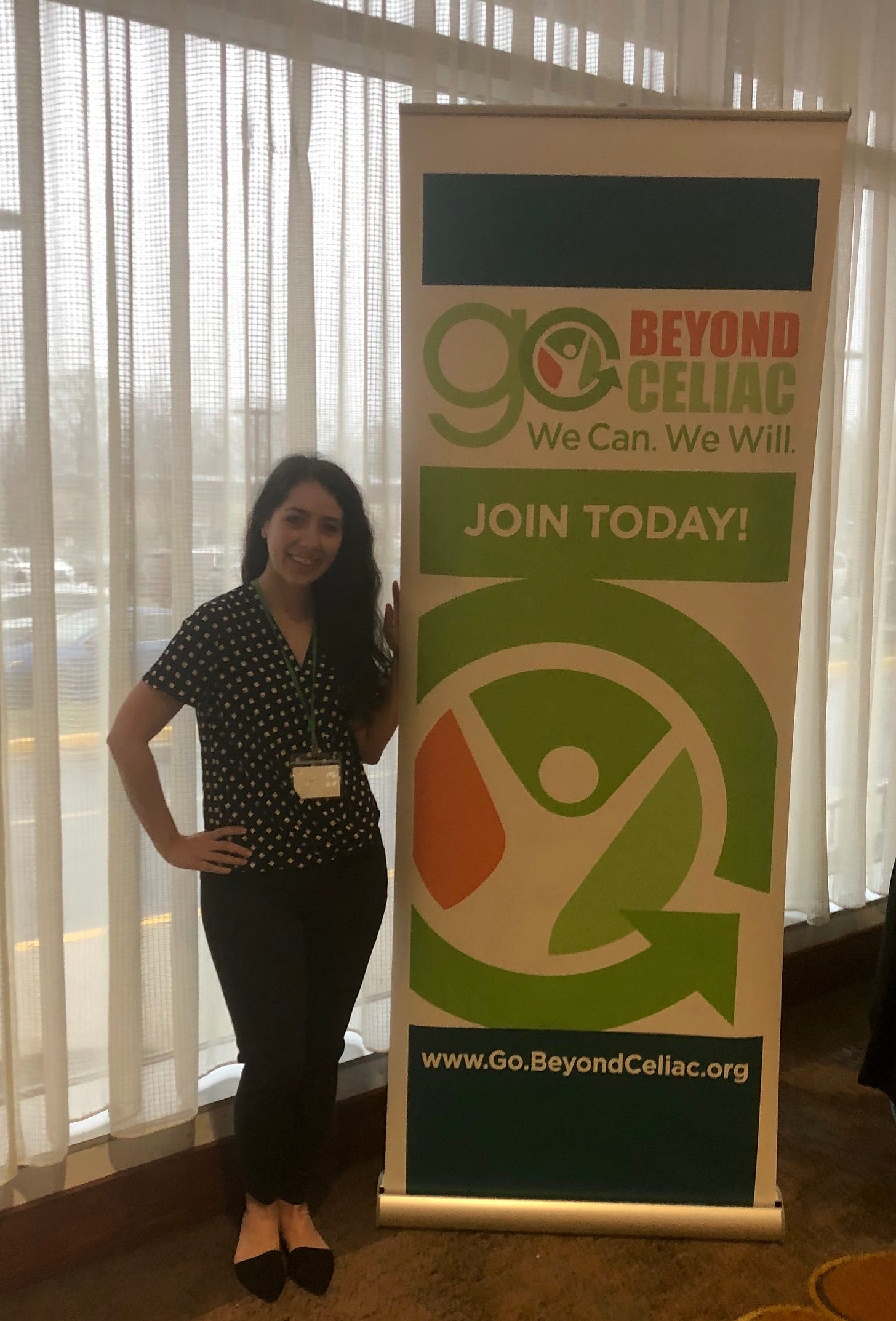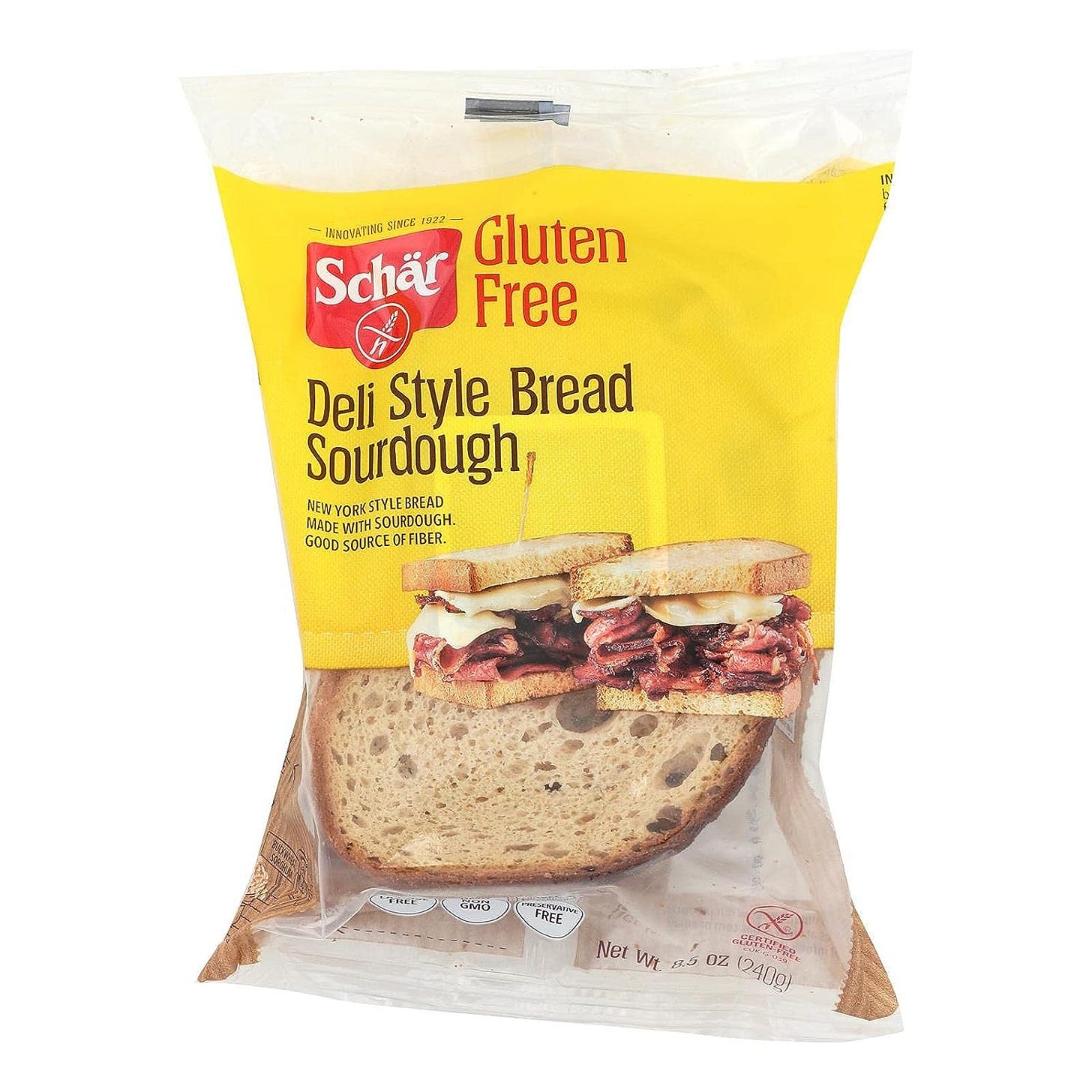Here's What a Celiac Diagnosis Really Looks Like
I'm revealing it all here.
I’m speaking about my celiac journey at the Beyond Celiac Summit in Greenwich Connecticut this Saturday, September 30 (say hello if you’ll be there!) — and I have to admit I’m a little nervous. I’m sure I’m not the only one who hates public speaking, right?
I decided to write out my diagnosis story before the event to help get my thoughts in order — and I wanted to share it here as well in case you’re curious about what it looks like to be diagnosed with celiac disease.
While everyone’s experience is different, it’s true that many of us go years before we find out we have this condition — and experts believe as few as one in five people with celiac disease ever get diagnosed.
Table of contents:
My symptoms: acid reflux, bloating…and muscle cramps?
I dealt with classic celiac symptoms, like bloating and heartburn, for many years before getting a diagnosis. I had acid reflux all through college and my 20s but chalked it up to all the coffee, alcohol, and junk food I was consuming at the time.
I went to a few doctors over the years, and they’d usually just prescribe me omeprazole to take for a couple of months and send me on my way. I would feel better after finishing the course of medication, but then eventually, my symptoms would come back.
I also had some other symptoms that I didn’t realize could be caused by celiac disease until after I was diagnosed and did some research. According to Beyond Celiac, there are more than 250 known symptoms, many of which have nothing to do with digestion.
Some of the random symptoms I experienced — as far back as childhood — included frequent canker sores, nighttime leg cramps, and easy bruising. Seriously, since I was around 10 years old, I would wake up in the middle of the night with the most excruciating leg cramps every few months.
I never thought to bring up any of these symptoms with a doctor — even though they were annoying to deal with, I thought they were nuisances I would just have to put up with. (What do you know, all of these symptoms went away once I was diagnosed with celiac disease and started eating gluten-free!)
In January 2020 — when I was 31 — I started experiencing an intense, persistent burning pain in the side of my abdomen. This didn’t feel like run-of-the-mill heartburn, so I went to see a new GI doctor to find out what was going on.
My diagnosis: endoscopies, ultrasounds, and bloodwork, oh my!
My gastroenterologist recommended I get an endoscopy and ultrasound to see what was happening in my body. I scheduled the ultrasound for the following week, and everything looked normal.
Then, during the last week of February 2020, I finally had the endoscopy. My doctor immediately diagnosed me with a peptic ulcer and gastritis (which explained the intense burning pain I was having!). She also took a biopsy of my intestines during the procedure to see if there was anything else (like celiac disease or lactose intolerance).
Since I had been diagnosed with an ulcer, I figured that was it. But when I went for my follow-up appointment in the first week of March 2020, my doctor said it looked like there was evidence of celiac disease. My villi (the cells lining the intestines) were flattened, which is a tell-tale sign of the condition.
I had some bloodwork done to confirm the diagnosis, and I was supposed to get the results within a week. My doctor said if my bloodwork came back positive for celiac disease, then I would have to go gluten-free. I went to Whole Foods that day to stock up on gluten-free foods just in case.
Well, I’m sure you remember what happened in March 2020 — COVID! So, I didn’t hear from my doctor about my bloodwork results. Her office was closed, but I finally got in touch with someone on her staff over the phone about two weeks after I had the blood test to ask if the results had come in.
My doctor called a little while later to let me know I did, indeed, have celiac disease and that I would need to go gluten-free. I made a virtual appointment with her for the following week.
During that appointment, she recommended I start taking a multivitamin since my intestines were damaged from the celiac (meaning they couldn’t absorb nutrients properly) and I was specifically pretty low in vitamin D.
She also suggested I meet with a dietitian for more tailored advice on supplementation and gluten-free eating. The next week, I met virtually with a dietitian, who shared some useful materials with me about how to read food labels and avoid cross-contact.

My initial reaction: surprise but also relief
I was initially surprised to learn I had celiac disease. It wasn’t on my radar at all (it’s a genetic autoimmune condition, but no one in my immediate family has ever been tested for it so I don’t know if any of them have it).
Looking back and thinking about the symptoms I had, though, it certainly makes sense — especially when I started reading about all the non-GI symptoms that can be associated with the condition.
While I can’t say I was happy to be diagnosed with celiac disease, I was relieved to finally have an answer to what was causing my digestive issues (and more) for all those years.
Products I’m loving right now
Every newsletter, I’ll share (at least) three products that are currently part of my celiac self-care routine, from food to beauty to wellness. This week, sandwich bread is on my mind. Most gluten-free bread is objectively awful (and why are the slices so small?). But thankfully, I’ve found a few options I think actually taste good.
Simple Kneads Organic Pumpkinickel Gluten-Free Bread: This gluten-free take on pumpernickel is a good alternative to rye (which is sadly off-limits if you have celiac disease). I like to use it as the base for avocado toast.
Canyon Bakehouse Hawaiian Sweet Gluten-Free Bread: I enjoy the slightly sweet taste of this bread. I’ve only ever used it to make sandwiches, but I imagine it would work well for French toast.
Schar Deli-Style Sourdough Bread: Finally, bread that comes in a normal size and isn’t teeny-tiny! It doesn’t fall apart and is my go-to choice for grilled cheese.
Sources:
WebMD. How Do I Know If I Have Celiac Disease? https://www.webmd.com/digestive-disorders/celiac-disease/celiac-disease-diagnosis-tests
Beyond Celiac. Celiac Disease Symptoms. https://www.beyondceliac.org/celiac-disease/symptoms/
Disclaimer: If you click on a link, I may get a small commission. This helps support this newsletter so I can keep writing it.




